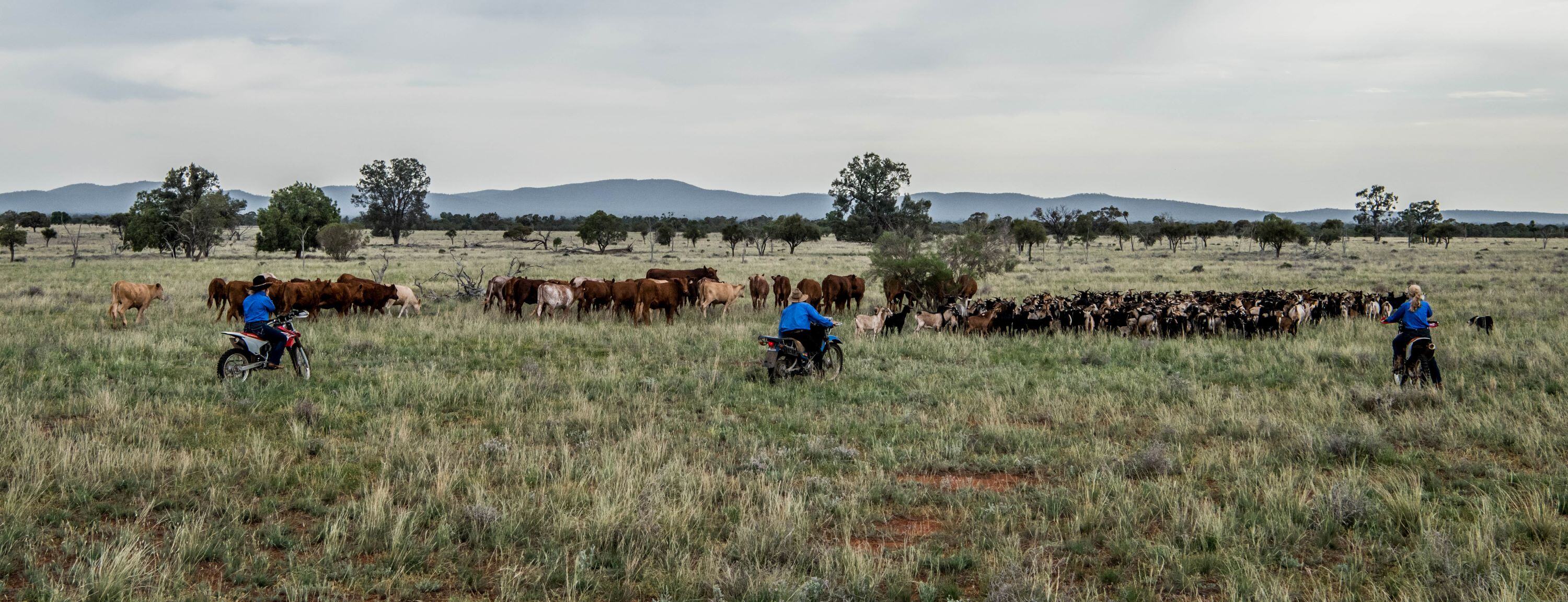The Australian Beef Market in 2025: An Absolute Cracker
In this column in July, the StoneX H2 2025 Australian Cattle & Beef Market Outlook’s bold calls were analysed and assessed for what the final 6...

Meat & Livestock Australia (MLA) has released its latest State of the Industry report, which highlighted the resilience of Australia’s red meat sector amidst 2023’s market volatility.
MLA’s Managing Director, Michael Crowley, noted that after a period of growth, 2023 saw peak production and slaughter numbers in cattle, sheep, and goats.
However, challenging weather, coupled with El Niño and a Positive Indian Ocean Dipole (IOD), led to sharp price declines.
“Weather conditions deteriorating in much of the country and a simultaneous declaration of an El Niño and Positive Indian Ocean Dipole (IOD) triggered a significant sap in confidence in the industry, pushing prices to concerning lows in the second half of last year,” Mr Crowley said.
Mr Crowley credited the sector’s resilience to strong demand from export markets and improved conditions late in the year as favourable rainfall lifted confidence.
Industry turnover
In 2022–23, Australia’s red meat and livestock industry turnover was $81.7 billion. This is 2.2% below revised 2021–22 figures, though an increase of 6.3% on 2018–19 figures.
New South Wales (28%), Victoria (24%) and Queensland (22%), represent the majority of turnover within the industry, with Western Australia (14%), South Australia (8%), Tasmania (3%) and the Northern Territory (1%) rounding out the remaining turnover.
Chief Executive Officer for the Red Meat Advisory Council (RMAC), Susan Wakeford said that the State of the Industry report highlighted the importance of Australia’s livestock production systems.
“The industry faced an unstable year in 2023 and came out the other side in a strong position with record production and strong export demand from all around the world,” Ms Wakeford said.
“Key to the industry bouncing back after the market downturn halfway through 2023 was the steadying of the domestic labour market and expansion of current and new processing plants which provided growth to Australia’s processing capacity.
“This allowed industry to absorb and manage the surplus of cattle and sheep turned-off over the year, helping industry reach records in both production and slaughter.”
Exports
Red meat and livestock export value rose 3% year-on-year to total $18.2 billion in 2022–23.
In 2022–23, the value of chilled and frozen meat accounted for nearly 83% of total meat and livestock exports at $14.7 billion, with live sheep and cattle exports accounting for 7% at $1.3 billion. Co-products and further processed exports accounted for the other 10%, valued at $1.7 billion.
In calendar year 2023, Australia was the second largest beef exporter and the world’s largest sheepmeat and goatmeat exporter.
In 2023, Australian beef and veal exports totalled 1.08 million tonnes shipped weight (swt), up 27% year-on-year. The United States emerged as Australia’s largest beef export market (in volume terms) in 2023, totalling 246,000 tonnes.
In 2023, Australian lamb exports totalled 326,014 tonnes swt, the highest on record and 15% above 2022. China became Australia’s largest lamb export destination in 2023 in volume terms, at 66,875 tonnes. While mutton exports totalled a record 209,580 tonnes swt, a 44% year-on-year increase with China accelerating as the number one market at 97,481 tonnes.
Goatmeat exports totalled 33,904 tonnes swt in 2023, up 55% on the year prior. The United States remains the largest destination for goatmeat, accounting for 42% of exports or 14,477 tonnes in 2023.
Domestic consumption
Australia’s per capita beef and sheepmeat consumption continues to be one of the largest in the world. 92% of Australian households purchased beef and 72% bought lamb in the past year.
Australia remains one of the world’s largest consumers of beef, ranked third behind Argentina and the United States, with per capita consumption in 2023 averaging 23.4kg.
Australia was the largest sheepmeat consumer on a per capita basis in 2023 at an average of 7.4kg. Helping to boost lamb consumption over the past year is the falling lamb retail price, which fell below beef in mid-2023.
.jpg)
In this column in July, the StoneX H2 2025 Australian Cattle & Beef Market Outlook’s bold calls were analysed and assessed for what the final 6...
.png)
Each December we save the last article of the year for a bit of a crystal ball gaze, as we try to bring together market fundamentals and work out...
.png)
Australia’s wool market posted another strong performance this week, with all micron categories attracting solid support across the three selling...